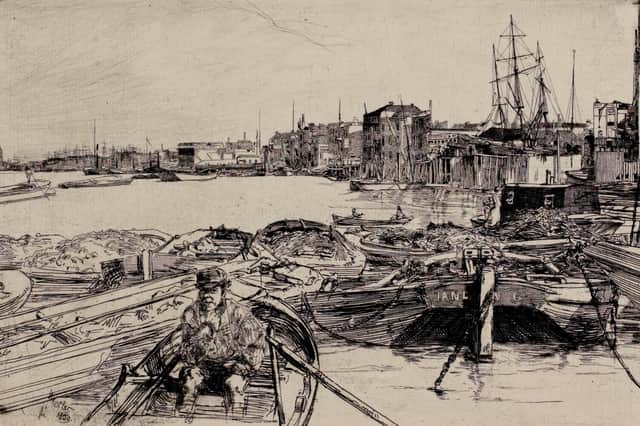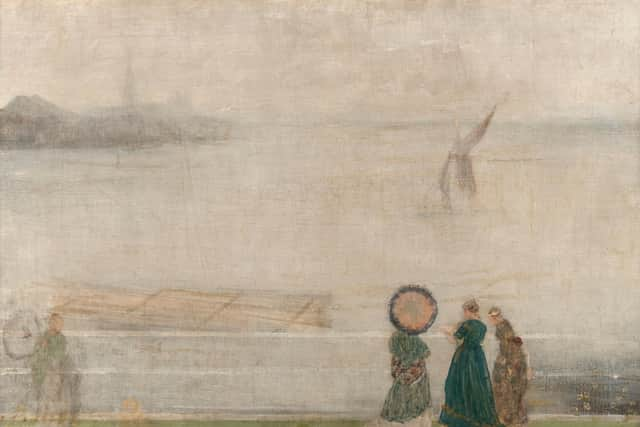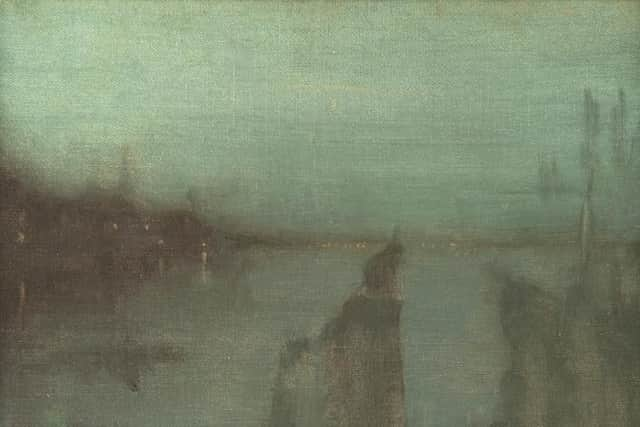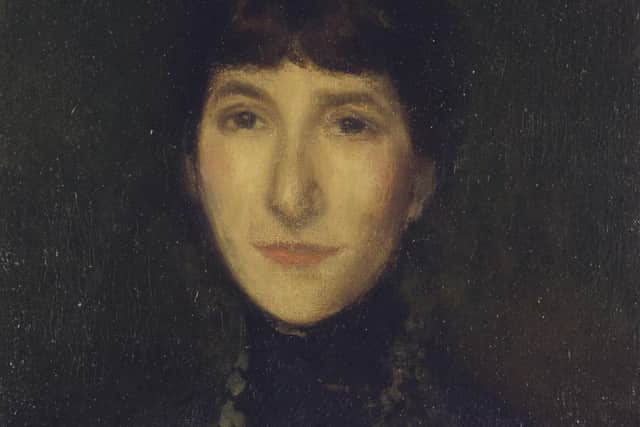Art review: Whistler: Art and Legacy, Hunterian, Glasgow


Whistler: Art and Legacy, The Hunterian, Glasgow *****
In 1891 following a campaign by the city’s artists, Glasgow purchased James Abbott McNeill Whistler’s portrait of Thomas Carlyle for 1,000 guineas. It was Whistler’s first sale to a public collection though he had been working for more than 30 years. Whistler badly needed support, too, due a libel suit with the art critic John Ruskin, who had attacked his impertinence at asking “two hundred guineas for flinging a pot of paint in the public's face.” Afraid of Ruskin, Whistler’s fellow artists failed to rally to his defence and he won just a farthing in damages. The costs of the case helped push him into bankruptcy. Later, Glasgow University also awarded him an honorary degree.
Whistler’s heir was Rosalind Birnie Philip, his wife Beatrix’s niece. After Beatrix’s death in 1896, conscious of how much Whistler had valued the city’s support, she made two donations from Whistler’s studio to Glasgow University, and at her death in 1958, the remainder of what she had inherited from the artist passed to the University.


Advertisement
Hide AdWhat is left in a successful artist’s studio, however, is almost a priori unlikely to be their best work. Nevertheless, there is enough in the collection for the exhibition Whistler: Art and Legacy to tell Whistler’s life story in a series of chapters. He was prolific and inventive printmaker and the Hunterian collection, both as it was inherited and later judiciously augmented, is of unique importance and it provides the core of the show from his earliest printmaking to his last years. The prints are balanced by drawings and paintings and together they give a comprehensive, but also nicely articulated account both of what the university holds and how it illustrates the artist’s career.
A preface includes the loan from Kelvingrove of the Carlyle portrait, properly titled in true Whistler fashion, the painting being more than just its sitter, Arrangement in Grey and Black No 2: Portrait of Thomas Carlyle. There is also a self-portrait and a stern but rather beautiful portrait by the artist of his niece and the University’s benefactress, Rosalind Birnie Philip.
Born in Massachusetts, Whistler came from a family of soldiers and engineers. Hs father went from a career in the military to building railways and bridges. Destined to follow in his footsteps, Whistler went to West Point in 1851 to train as a military engineer. Training included topographical drawing and so his career as an artist and printmaker began with maps, but in 1855 he left his army training to study art in Paris. Regularly visiting London, he made etching trips with his brother-in-law, Francis Seymour Haden. Works from this time are drawn, on the spot, directly onto the etching plate and in consequence had a casual feel to them. He then moved permanently to London and had his first print show there in 1861. This included such early masterpieces as Black Lion Wharf, one of a series of superb prints of the London docks. He clearly thought highly of it for it hangs on the wall in his famous portrait his mother. The print already shows his characteristic balance of easy fluency and spaciousness with often quite minute detail. A bearded man in the foreground is in sharp focus, but his immediate context is merely sketched in as our attention moves to the intricately described boats and houses beyond him. The image captures how our attention might be engaged with the actual scene.
His work in the studio was very different and the next section of the show is mostly devoted to drawings of rather ethereal, female models in posed arrangements in the studio. These were inspired in part by Japanese prints which he collected and which were also an important inspiration for some of his most memorable images, his nocturnes and his etchings of Thames bridges. He adopted the word “nocturne” from music to describe his marvellous mood paintings of the foggy Thames. Among his greatest inventions, they were also what most infuriated Ruskin. Battersea Reach from Lindsay Houses here is characteristic. Four female figures, one in Japanese attire and two with parasols, are silhouetted against a pale and misty river. A similar print, Early Morning, is even more evocative, while a painting simply called Nocturne is almost abstract. His etchings of the old wooden bridges of the upper Thames are very different as he explored their intricate structure with his delicate and incisive etching technique, though here too Japanese prints were an inspiration.


In 1879 Whistler travelled to Venice with a commission to make what became one of his most famous published sequences of prints, the Venice Set. They are really beautiful things, balancing his command of intricate detail with the unique mood of Venice, its antiquity and ongoing life in a world of water and ancient buildings. Outstanding, though, are a small group of pastels also of Venice which include two lovely sunset views of the church of the Salute seen across the water. The mood is rather different in a section devoted to Whistler’s travels along the coasts of England, France and the Netherlands. These on the spot sketches are small but vivid. The fluency of this brushwork is really beautiful. Fresh breezes raise white horses on blue seas, or green and silver waves break on the shore.
In 1888, Whistler married Beatrice Godwin whom he called Beatrix. She was a designer and a small separate exhibition devoted to her art shows that she was also a considerable artist. In 1890 the couple moved to Paris and many of his Paris prints are of her in her garden, or with the birds she liked to keep. A lithograph shows her possibly with her sister Ethel and from her pose perhaps already ill with the cancer from which she died. In Paris, Whistler became friendly with such avant garde figures as the poet Stéphane Mallarmé and so perhaps finally felt more accepted than he had ever been in London. In his last years in the studio, he continued to make beautiful, even voluptuous studies of his female models, but he was also intrigued as many artists as were by the exotic dancer, Loe Fuller, and made studies of her. An epilogue shows some of his etching tools, plates another paraphernalia. The whole show has a very personal and intimate feel to it. As far as you could be, you feel you are with the artist in his studio. To keep this mood perhaps, the organisers have not included any of the larger works from the collection, the full-length portraits, for instance, or the full size cartoon for his famous Peacock Room, but these are there to be see nevertheless, among the rest of the Hunterian’s world class collection.
Advertisement
Hide AdUntil 31st October, https://www.gla.ac.uk/hunterian/visit/exhibitions/exhibitionprogramme/whistlerartandlegacy/
A message from the Editor:


Thank you for reading this article. We're more reliant on your support than ever as the shift in consumer habits brought about by coronavirus impacts our advertisers.
If you haven't already, please consider supporting our trusted, fact-checked journalism by taking out a digital subscription at https://www.scotsman.com/subscriptions